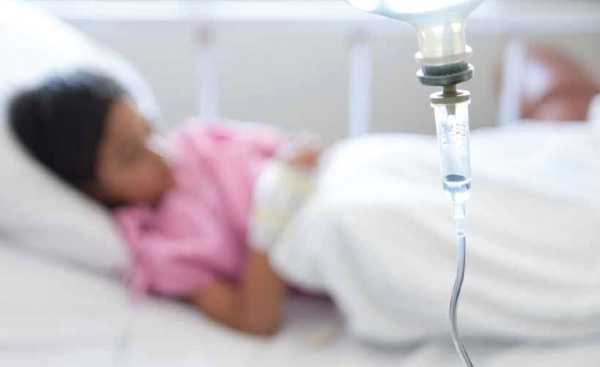TOP CHILDHOOD CANCERS And The Warning Signs

Nobody likes to hear their child is sick more so with such an unpredictable disease like cancer. October may be Breast Cancer Awareness Month and while it is not typically a condition children are diagnosed with, there are other types of cancers, generally referred to as paediatric cancers, which children are prone to. They include:
Leukemia
This refers to cancers of the bone marrow and blood. Internationally speaking, leukemia is the most common of childhood cancers. Symptoms include bone and joint pain, weakness, ashen skin, fever, and weight loss.
Bone and spinal cord tumours
Just as the name suggests, this type of cancer attacks the bones and the spinal cord. Symptoms include headaches, nausea, vomiting, blurred or double vision, dizziness, seizures, trouble walking or handling objects.
Neuroblastoma
This is a cancer that affects foetuses. It develops early in the nerve cells and can persist past childbirth. It often starts in the abdomen where it manifests as a swollen tummy. It can also cause bone pain and fever.
Kidney cancer
This is a tumour that affects the kidney and common in children between the ages of three and six. The most common type is Wilms’ tumour. Symptoms include swelling or lumps in the belly, fever, nausea, blood in the urine and poor appetite.
Rhabdomyosarcoma
It starts in the skeletal muscles (those responsible for moving the body) but can easily start in any organ as the muscles are distributed almost everywhere in the body. It is characterised by swelling and pain.
Lymphomas
These are cancers that start in the immune system cells but spread fast to other organs. Symptoms include weight loss, fever, sweat and fatigue, swollen lymph nodes in the neck, armpit or groin.
Common childhood cancers in Kenya
According to the Kenya Network of Cancer Organisations, childhood cancer accounted for 15 per cent of cancer admissions at Kenyatta National Hospital between 1998 and 2008. Additionally, one in 10 children survives cancer in Kenya, compared to seven in 10 children in developed countries.
In Kenya and East Africa in general, the common paediatric cancer is Burkitt lymphoma. It is named after Dr Denis Burkitt who discovered the cancer was common among children and young adults in Africa. It is commonly referred to as ‘endemic’ Burkitt lymphoma and it presents differently from ‘sporadic’ Burkitt’s cancer, which is more common in the western world.
In children, endemic Burkitt lymphoma often affects children’s jaws although it can start in other organs as well. It is also more common in boys. It is recognised as a fast growing tumour that kills very fast if left untreated. Leukemia closely follows and thereafter, skin and kidney cancers and rhabdomyosarcoma follow.
According to the World Health Organization (WHO), close to 80 per cent of children with cancer survive five or more years after diagnosis. In Kenya, survival rates are lower not only due to late diagnosis, but misdiagnosis as well. Unfortunately, there is an acute shortage of clinicians who can handle the disease. Additionally, the cost of treatment remains prohibitive and unaffordable to many families.
Treatment and care for a child with cancer
To diagnose cancer, sample tissues are removed for scanning (biopsy). If found to be positive, intensive chemotherapy is recommended. In other cases, surgery to remove or cut off some tumours, and stem cell treatments may also be recommended.
A good diet is key in helping patients brave not only the disease, but also its treatment. Talk to your doctor or nutritionist and plan accordingly. Here are additional tips to help you along the way.
Get support
You need to be strong enough to look after your child. Seek help and get as many people involved as you can. You can also enlist your child in a support group for emotional help. This may work for parents as well.
Stay positive
A good attitude is almost as important as treatment. Encourage your child and always try to look at the silver lining in every situation. At the same time, engage your child in activities that he enjoys. More importantly, cherish each moment.
Adapt
Restrictions are a part of the cancer life. However, that does not mean life has to be a damper. Some parents shave their hair in solidarity with their child or take on the child’s diet to make it a collective and less traumatising experience for the child.
Published October 2016




